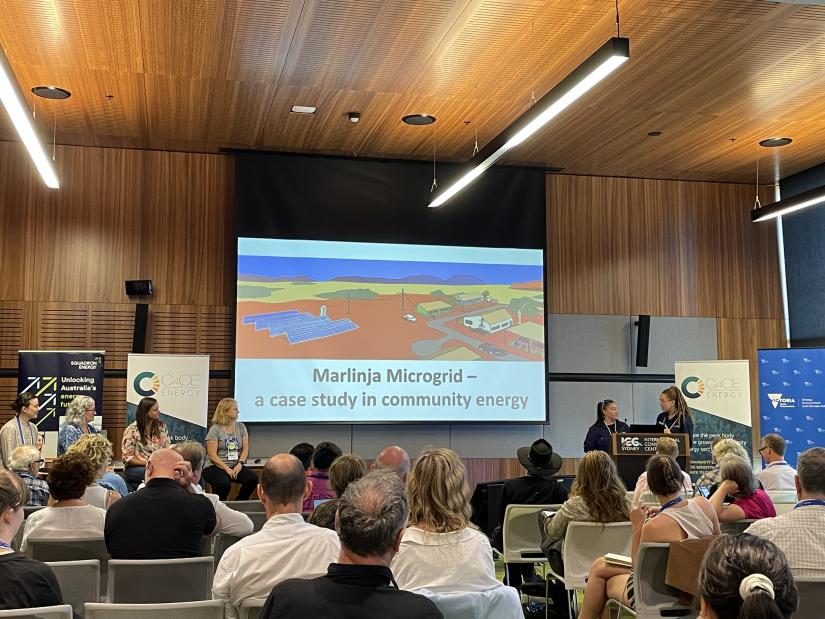Reflections from the Community Energy Congress
ISF researchers Sarah Niklas and Jaime Comber recently attended the 2024 Community Energy Congress. Here, they share their insights from the conference.

The 2024 Community Energy Congress (6-8 March 2024), brought together over 230 leaders from communities, NGOs, government, infrastructure and business. Over three days, local leaders shared their vision of a community-driven renewable energy future and the incredible progress under way.
Community energy is placed based
A highlight of the congress was the range of energy projects that had grown from community needs and are driven by the desire to find unique solutions that would work for them. Colin Long (Earthworker Smart Energy Cooperative) shared how their worker-owned cooperative was helping homeowners and businesses in Victoria audit and retrofit their buildings. Scott McDinny (Ngardara Cooperative) and Lauren Mellor (Original Power) spoke about their partnership to develop the Ngardara Microgrid Project, the Territory’s first Indigenous owned utility-scale solar microgrid. Renewable Newstead’s Geoff Park shared news about the near complete small-scale solar farm that provides renewable energy at affordable prices.
These stories underscored some key themes: the drive that comes from having a personal stake in your community’s energy, and the importance of support, both financial and practical, from councils and other governance bodies to make programs happen.
Community energy builds climate resilience
Climate change and energy resilience ran like a red thread throughout the congress. They were the vital drivers behind renewable energy projects.
In Mallacoota, a community-owned solar system and a battery were built as a response to the devastating bushfires experienced by East Gippsland in 2019/20. Tricia Hiley’s, Coordinator of Mallacoota’s Sustainable Energy Group, message was that community energy resilience can be achieved by combining community solar with Battery Bulk Buy’s. Karina Donkers, Program Coordinator at Geelong Sustainability Group, introduced the Climate Safe Room. The project prepares vulnerable residents in low-income households for heat waves, by offering free home energy upgrades. Other solutions to energy resilience focused on improving public buildings, as the establishment of a stand-alone microgrid system at the Venus Bay Community Centre, demonstrates.
Community energy in practice
The final day of the congress involved a memorable visit to the Narara Ecovillage. This offered attendees a firsthand insight of their microgrid, community battery and intentional community. At the village, attendees had deep conversations about the opportunities and challenges ahead that currently define the community energy sector.
The congress brings together all actors in the sector. Several speakers cited the profound influence of the Congress which spurred them to join community energy organisations. This year's Congress not only spotlighted innovative projects, it allowed for shared problem-solving and created a collective vision and momentum for community driven energy. When asked what they enjoyed most, one participant said, "This here, all of it, the community and sharing stories, its special when you come from a place that’s remote.”
